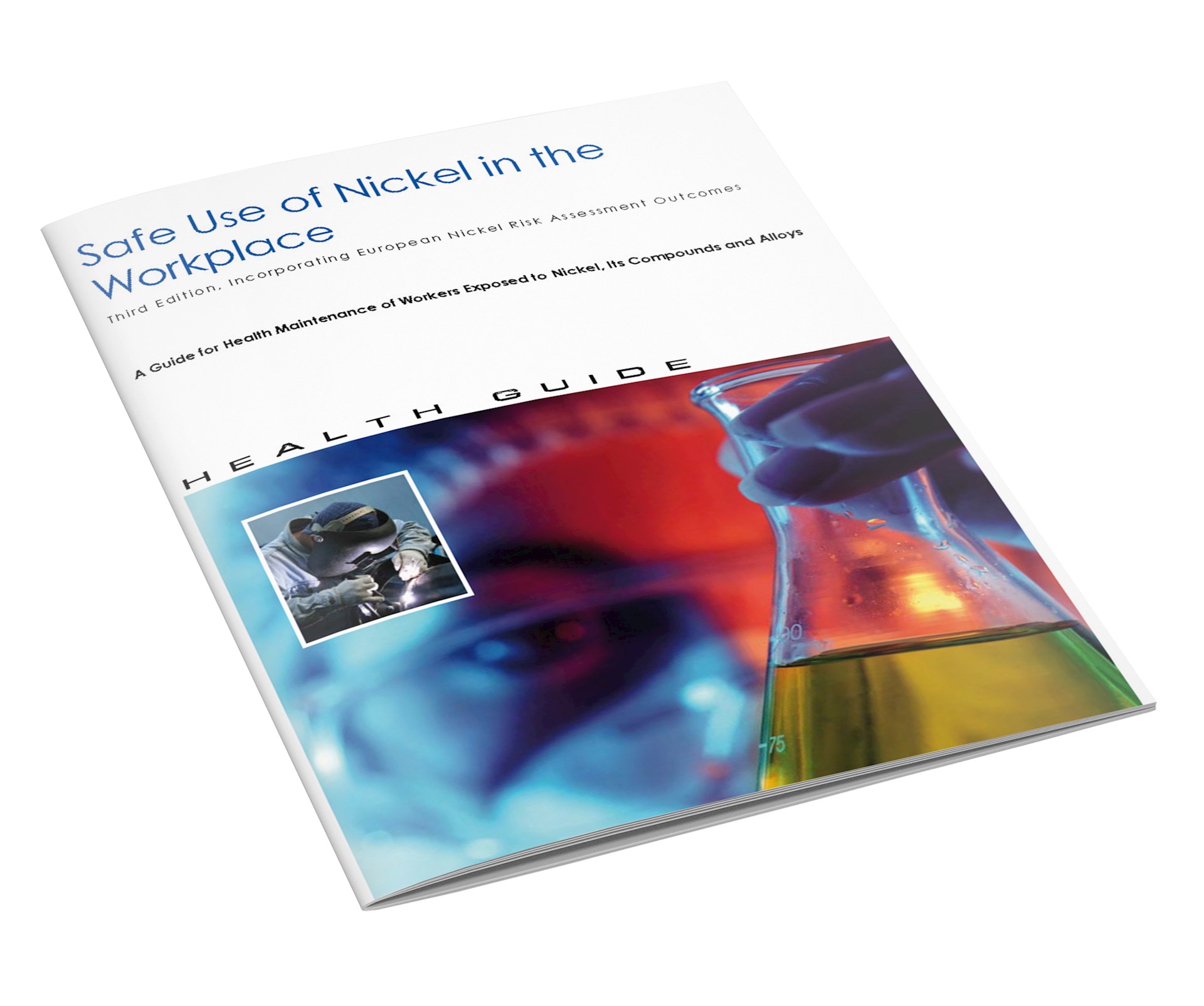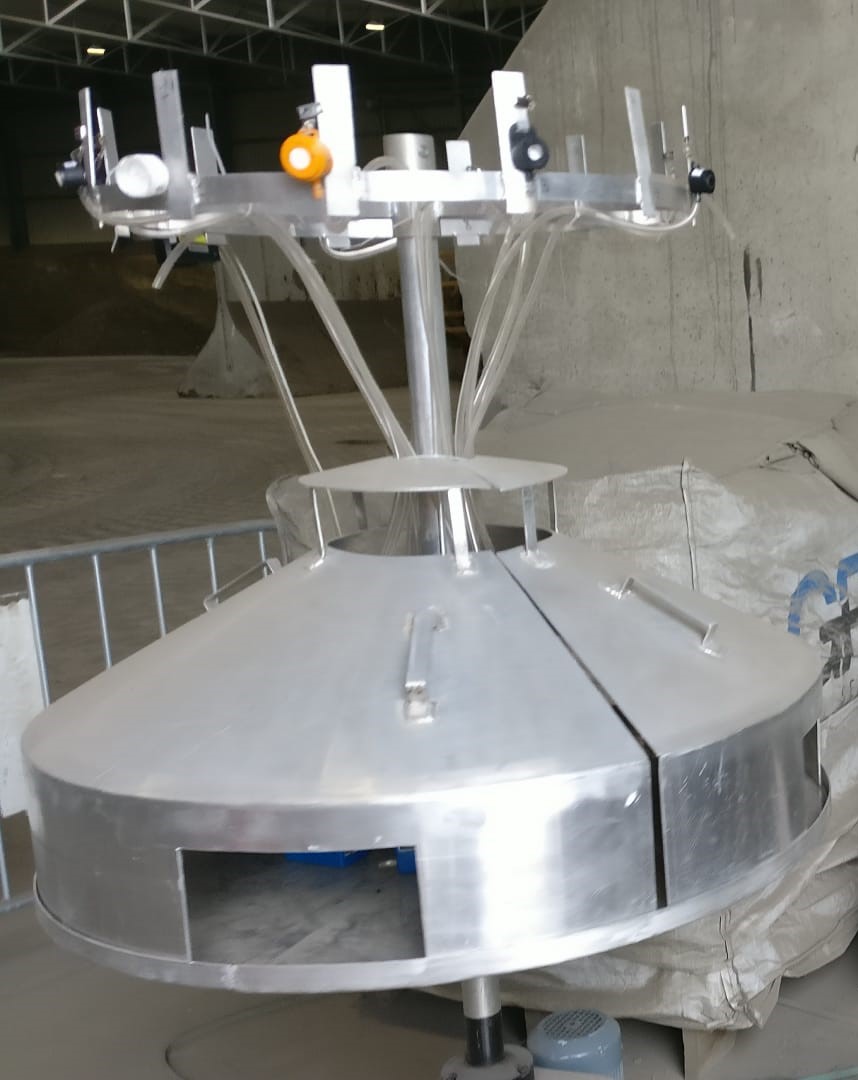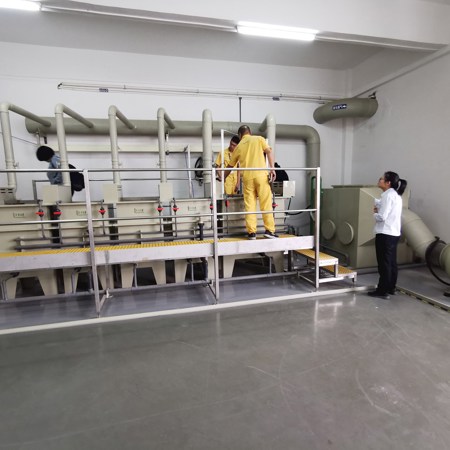One of the goals of the annual World Day for Safety and Health at Work on April 28 is the global prevention of occupational diseases. It is an awareness campaign that seeks to draw international attention to the scale of the problem and how promoting and creating a culture of safety and health can help reduce the incidence of occupational disease.
World Day for Safety and Health at Work - 2021

Steven Verpaele, the Nickel Institute’s Industrial Hygienist explains the different ways that the work he leads is helping to contributing to the culture of occupational safety and health that respects the right to a safe and healthy working environment at all levels.
Making up-to-date information freely available
At the Nickel Institute, we believe delivering education and disseminating knowledge widely is essential to ensure an understanding of how to use and produce nickel safely.
In our extensive library of technical guides we freely offer several publications and documents on the use of nickel at the workplace. A particular example is the Workplace Guide on how to safely handle nickel and its compounds in the workplace. This guidance is specifically intended for all responsible functions related to the internal health management of workers exposed to nickel, its compounds and alloys.
The aim is not only to provide information on the potential hazards associated with exposure to various forms of nickel but also to establish a framework for the safe handling of substances containing nickel in the workplace. This guidance is also regularly updated to reflect new insights and research findings so that the latest information is always available to practitioners and workers. We are working on the next update to this useful guide which will be available later this year.
Visit our dedicated webpage to find out more about how the Nickel Institute contributes to safer workplaces around the world.

The Nickel Institute is also working on specific projects and activities within the field of Industrial Hygiene which will contribute to the creation of a safety and health culture when working with nickel and its compounds:
Developing a nickel workplace exposure database
The development of a nickel workplace exposure database aims to collect quality exposure data from all workplaces where exposure to nickel and its compounds is possible. The system is unique and consists of online and offline sections to gather all contextual and exposure information. The collection of quality exposure data is immensely important in the context of exposure prevention. On the one hand it is possible to compare certain processes in order to get a measure for the introduction of e.g. best available techniques for process control and task execution, on the other hand this data is also important to be ready for the future where the data can be used in the introduction of artificial intelligence in the workplace to control the exposure of the workers to nickel.
Developing an international sampler comparison study
This project is strongly related to the development of a nickel workplace exposure database.

Being able to accurately measure and analyse exposure data is the starting point for ensuring safe working conditions. The international sampler comparison study aims to identify the most appropriate measurement and analysis techniques for nickel and its compounds.
Depending on the type of processes and the nickel compounds that may be released in the workplace, a specific sampling technique may be needed to properly assess exposure. The use of the appropriate materials to carry out the sampling coupled with the most appropriate analytical technique is important to ensure that the full range within which exposure must be evaluated against the limit value is covered. This is especially important when applying the basic principle that exposure should be kept as low as possible. Also, new and improved sampling techniques such as real time sensors are being tested to make sure critical control measures can be taken in time.
Project to reduce nickel release during plating activities
This project started up in China with the aim to reduce the nickel release by changing several parameters related to the plating bath chemistry and agitation techniques. A complete lab scale plating installation is built to investigate the nickel release during different applications and by changing specific settings such as the cathode current density, the wetting agent concentration and the stirring mode. Nickel emissions will be measured above the bath to identify possible worker exposure and by emission measurements in the ventilation ducts. Adjustment of the parameters will reveal the most appropriate method to adequately protect workers.

Furthermore, as the Nickel Institute’s hygienist, I’m involved as an expert in numerous ISO, CEN and ASTM standardization working groups related to workplace atmospheres and employee protective equipment. In this way, the Nickel Institute also contributes to supporting the UN Sustainable Development Goals (SDGs), and in particular SDG 3 on ensuring healthy lives and promoting well-being for all at all ages and SDG 8 on promoting sustainable, inclusive and sustained economic growth, full and productive employment and decent work for all.
Through its Industrial Hygiene work, the Nickel Institute and its members are committed to contributing to the culture of occupational safety and health that respects the right to a safe and healthy working environment at all levels and places the highest priority on the principle of prevention.

